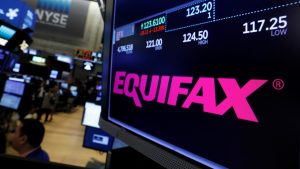The demise of Sears has left many puzzling. I spent a lot of my past seeing Sears as this untouchable department store that was a blueprint for the industry’s success. However, the liquidation of Sears has not come out of the blue. Upon investigation of what went wrong it is easy to see why Sears has fallen to such depths.
Sears has been a company whose brand exposure has not kept up with the competition. While companies like Macy’s, The Bay and Target have sponsored events and ran many ads, Sears has remained relatively quiet. Some of the marketing Sears has endured has been negative, from having a reported pension plan deficit of $267 Million to them closing over 50% of their stores since 2010 (Peterson, 2017). Furthermore, Sears’ demise has been inevitable for multiple years. As referenced in Michael Hua’s blog, Sears has not focused on adapting to the changing consumer taste, but rather focus on cutting costs and being cheaper than the other department stores. Sears made the terrible decision to focus on its competitors rather than its customers. It did not have an effective Value proposition, and the results of this are a 2013 study by Lutz, which indicated that 86% of Sears customers were unhappy with their service.
![]()
Moreover, Sears has had an incredible lack of innovation and intrapreneurial advances within it’s administration structure. Sears has maintained the same business model for decades, with little creativity regarding its operations. Their efforts have not brought in new customers, and the brand has clearly relied on its name and reputation to keep up sales. Eventually, however, their loss of their competitive advantage and their lack of novelty regarding their business plan resulted in them reporting a loss since 2010. Some of the potential lack of inside growth can stem from the toxic nature of the Sears workplace. Upper managers are often grilled by the CEO, who has been described to have “45-minute rants” whenever a manger can’t answer a question about any minute detail (Peterson, 2017). Such toxicity in the workplace has made many managers implement plans that are rushed and hectic, and that inevitably backfire. Sears’ leadership’s rigidity has limited the amount of creativity and intrapreneurial work that can revive the company going forward.
Sears is a hallmark brand of Canadian consumerism, yet in today’s age, their inevitable fate is bankruptcy. From a negative workplace environment that stifled intrapreneurial developments, to ineffective marketing compared to their competitors, Sears has made mistakes that will lead to it’s end. Sears Canada is a company whose business model should be a framework on what not to do in today’s business world.
Word Count: 438
References:
Peterson, H. (2017, January 08). Inside Sears death spiral: How an iconic American brand has been driven to the edge of bankruptcy. Retrieved October 29, 2017, from http://www.businessinsider.com/sears-failing-stores-closing-edward-lampert-bankruptcy-chances-2017-1
Hua, M. (2017, October 11). Former Biggest Retailer to Ruins; What Happened? Retrieved October 29, 2017, from https://blogs.ubc.ca/michaelhuablogs/2017/10/11/former-biggest-retailer-to-ruins-what-happened/
Photograph:
Peterson, H. (2017, January 08). Inside Sears death spiral: How an iconic American brand has been driven to the edge of bankruptcy. Retrieved October 29, 2017, from http://www.businessinsider.com/sears-failing-stores-closing-edward-lampert-bankruptcy-chances-2017-1

